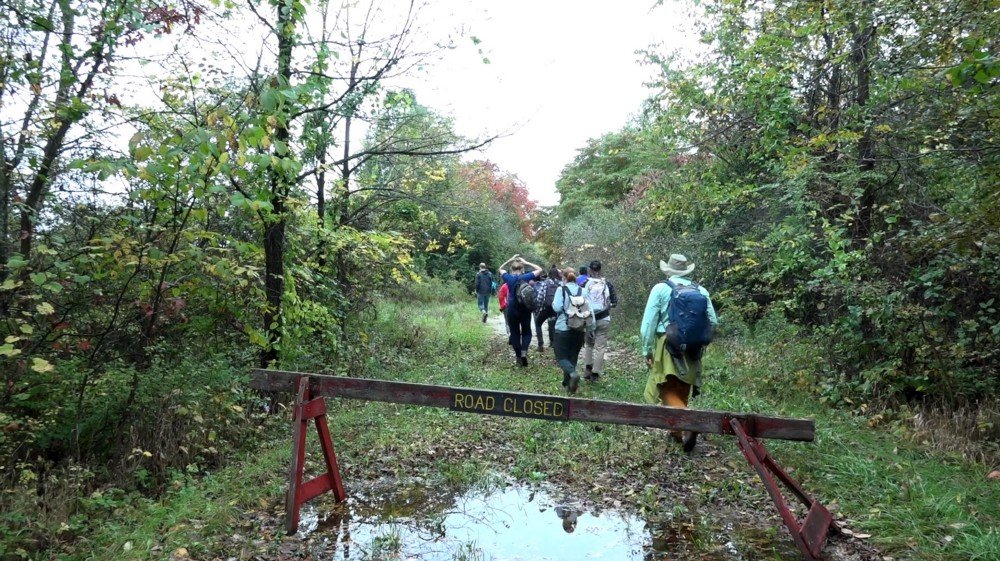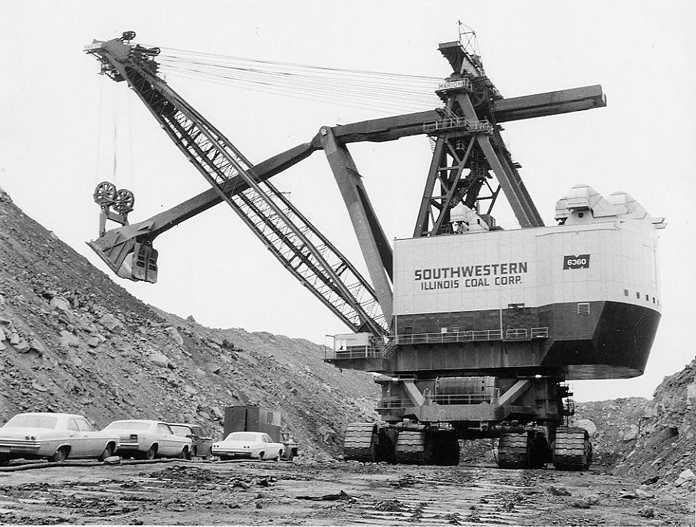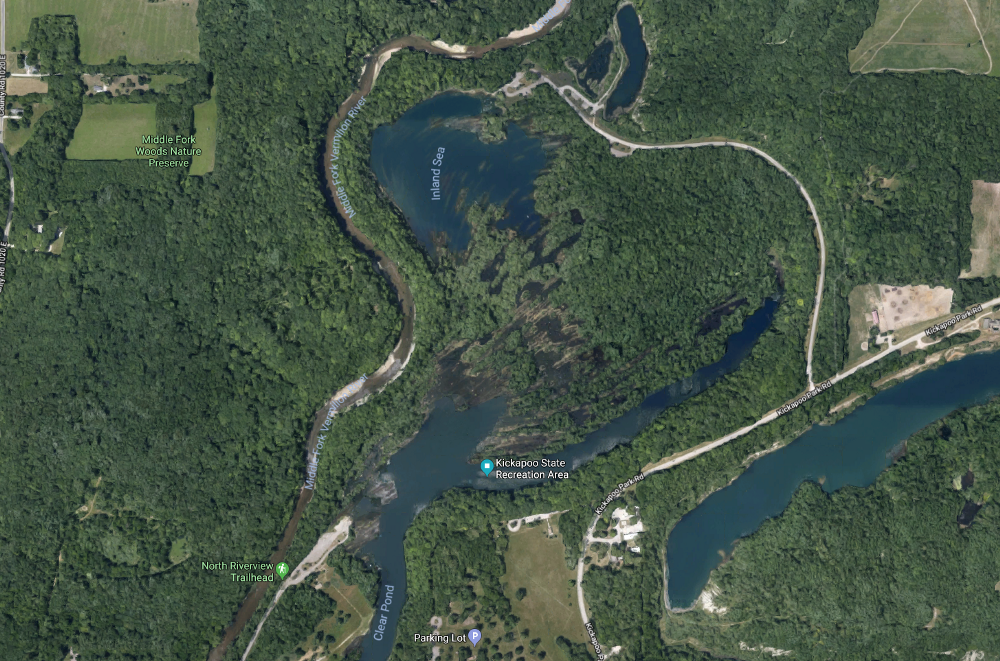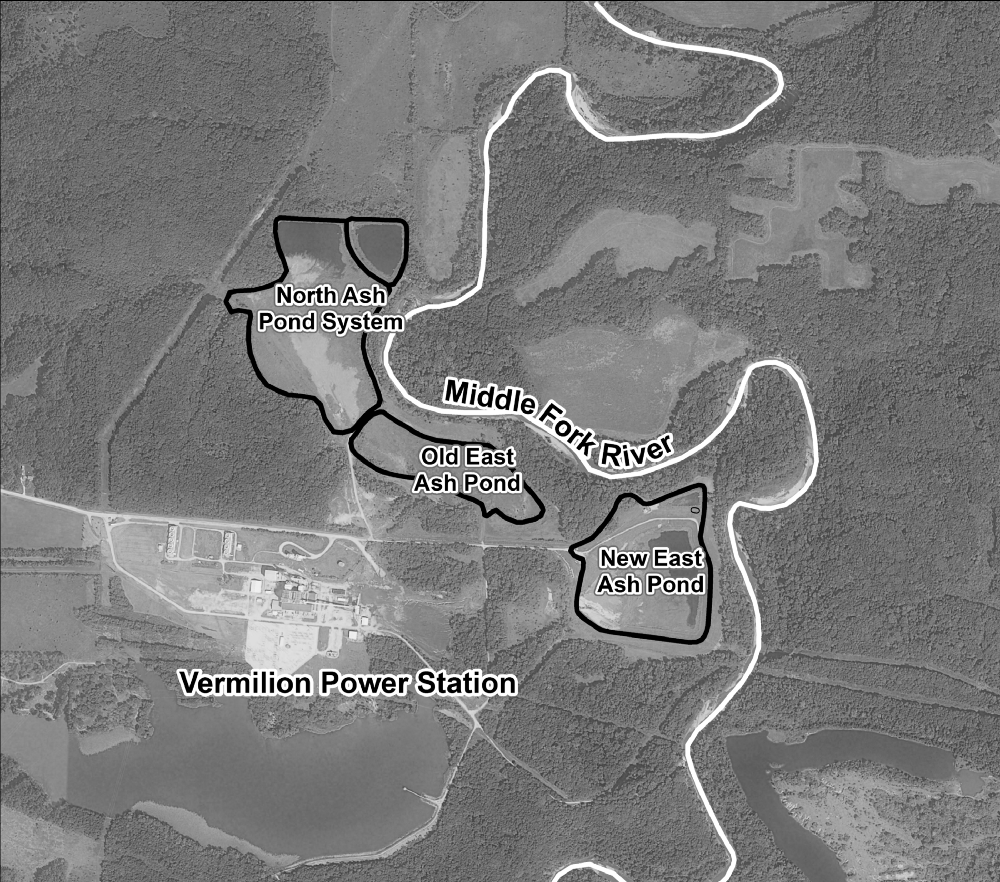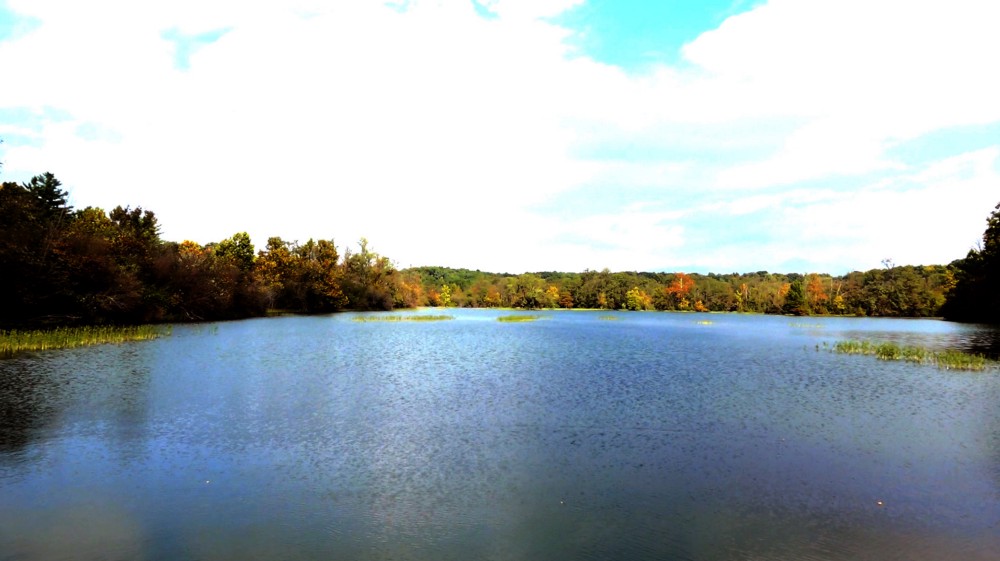Sacrifice Zones and Portable Climate
The Political Geology of Energy and Water in Central Illinois
“We may call it black diamonds. Every basket is power and civilization. For coal is a portable climate. It carries the heat of the tropics to Labrador and the polar circle; and it is the means of transporting itself whithersoever it is wanted. Watt and Stephenson whispered in the ear of mankind their secret, that a half-ounce of coal will draw two tons a mile, and coal carries coal, by rail and by boat, to make Canada as warm as Calcutta; and with its comfort brings its industrial power.”
—Ralph Waldo Emerson, The Conduct of Life, 1860
by Ryan Griffis
On a cool morning that turned into a balmy afternoon, a group of undergraduate and graduate students (in fields including Art, Urban & Regional Planning, and Anthropology) from the University of Illinois at Urbana-Champaign took a day trip to sites on the Middle Fork of the Vermilion River in Central Illinois, just outside of the town of Danville. We were guided to a spot along the East side of the Middle Fork by Andrew Rehn, a Water Resources Engineer with Prairie Rivers Network.
Our goal was to consider the geologic and biological forces that produced coal in Central Illinois, in relationship to the settler-colonial society that began extracting it in the 20th Century and the ongoing consequences of that extraction in political-ecological terms.
One of the places where we could see this relationship up close is along a windy stretch of the Middle Fork River. Here, we could see a set of facilities used to store coal ash, along with the inability of those facilities to prevent the ash from entering the surrounding ecosystem. Coal ash is a solid material produced when coal is burned — not unlike the ash produced when wood is burned.
Strip mined land in Illinois Photo by Charles Raworth, from the collection of the Wilmington Public Library in Wilmington, Illinois (c. 1940s)
There are a few different forms of coal ash (referred to as “Coal Combustion Residuals” or CCRs), all of which are a concern due to the heavy metals and compounds contained in coal. Mercury, arsenic, selenium, chromium, and cadmium are some of the materials that become concentrated in the remaining ash—materials that are known to cause cancer, brain damage, and other ailments to human, fish, and other living things. The Prairie Rivers Network has been working with other organizations and community members to force the company responsible for the land (Dynegy) to adequately address the public health and ecological concerns.
Along with our guided visit to the Middle Fork, the group visited the adjacent Kickapoo State Park, named for the Kiikaapooi/Kickapoo Nation. The Kickapoo currently occupies tribal lands in Kansas, Oklahoma, Texas, and Mexico. The state park surrounds a stretch of the Vermilion River system, just West of the Illinois-Indiana border, near the town of Danville. It also exists in the footprint of historic and extensive surface coal mining. Throughout the 20th century, and continuing to a lesser degree today, seams of Herrin and Danville Coal were mined.
Well briefly, in accordance with the social conditions and the affairs of the world, life is about the cheapest commodity there is.
Jack Battuello, recorded in 1973 for the Oral History Office at Sangamon State University in Springfield, IL. Battuello was a coal miner who helped write the constitution for the Progressive Miners’ Union in the 1930s.
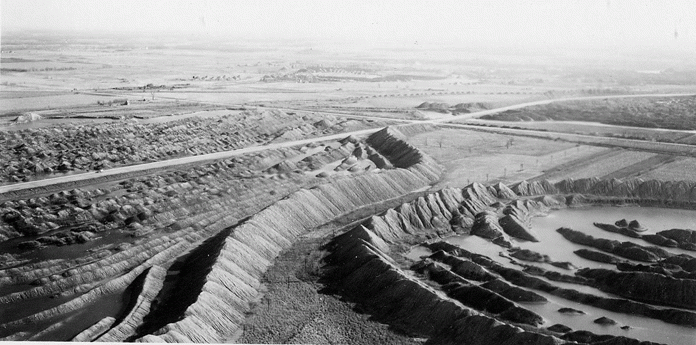
The extraction of coal throughout Illinois in the 20th century, and into the present, is just one part of a larger set of extractive activities that have changed the conditions for life in the region, altering the land (and atmosphere) indefinitely into the future. The decision to extract and burn coal can be ascribed to the interests of industrialists and those seeking to extend the reach of the US as a settler-colonial empire on the continent. The effects of that decision, of course, are not contained by the desires of those making such decisions, nor by the limits of their knowledge. We might choose to understand the situation through the lens of what Nils Bubandt and Anna Tsing have called “feral dynamics,” a term used to name situations constituted by a “double process of human management and more-than-human excess.” Responding to “the unintended ecological consequences of modern projects of progress,” they propose, would benefit from an ability to “appreciate both the human and nonhuman acts of landscape making, as these alternatively jostle or augment each other.”
